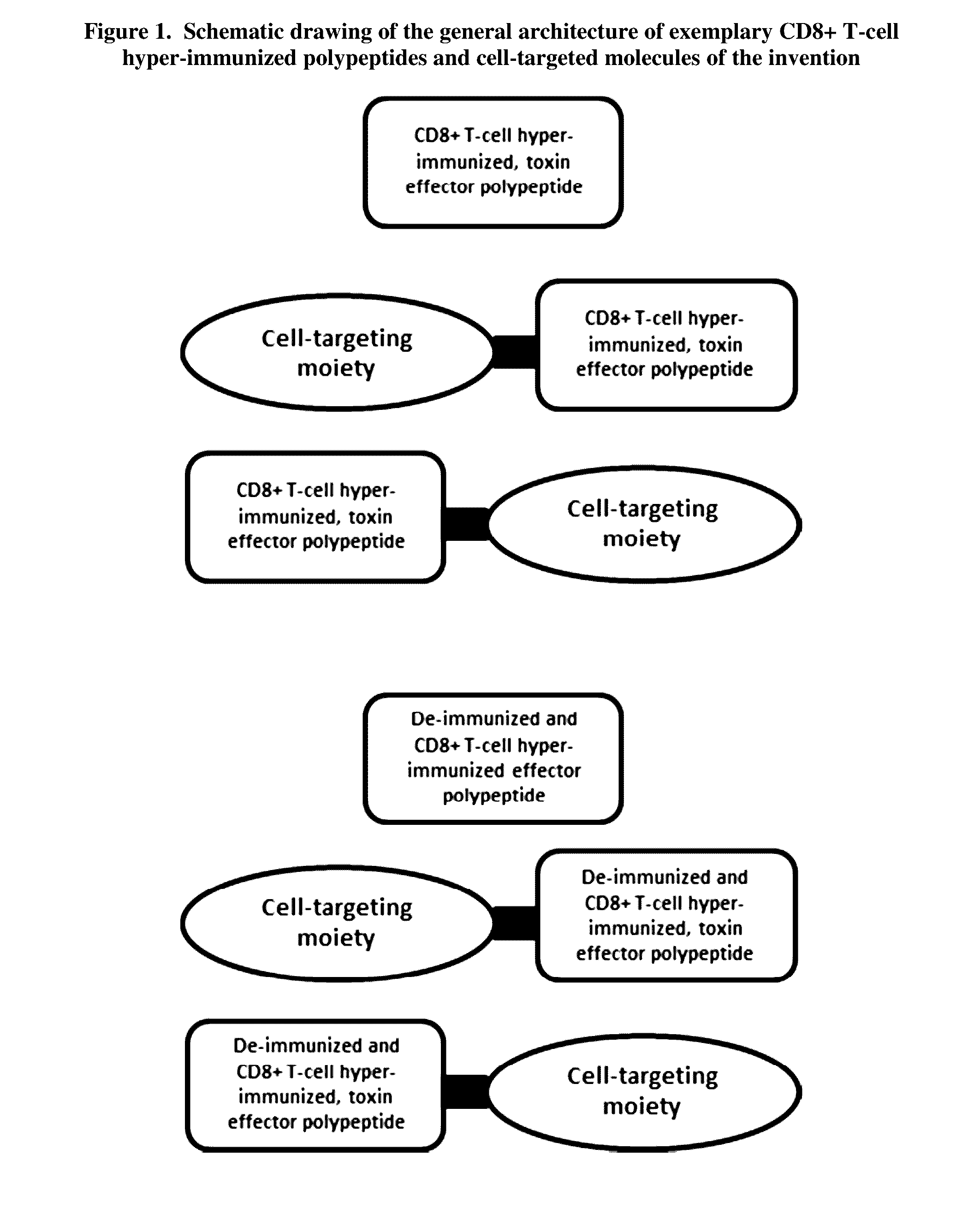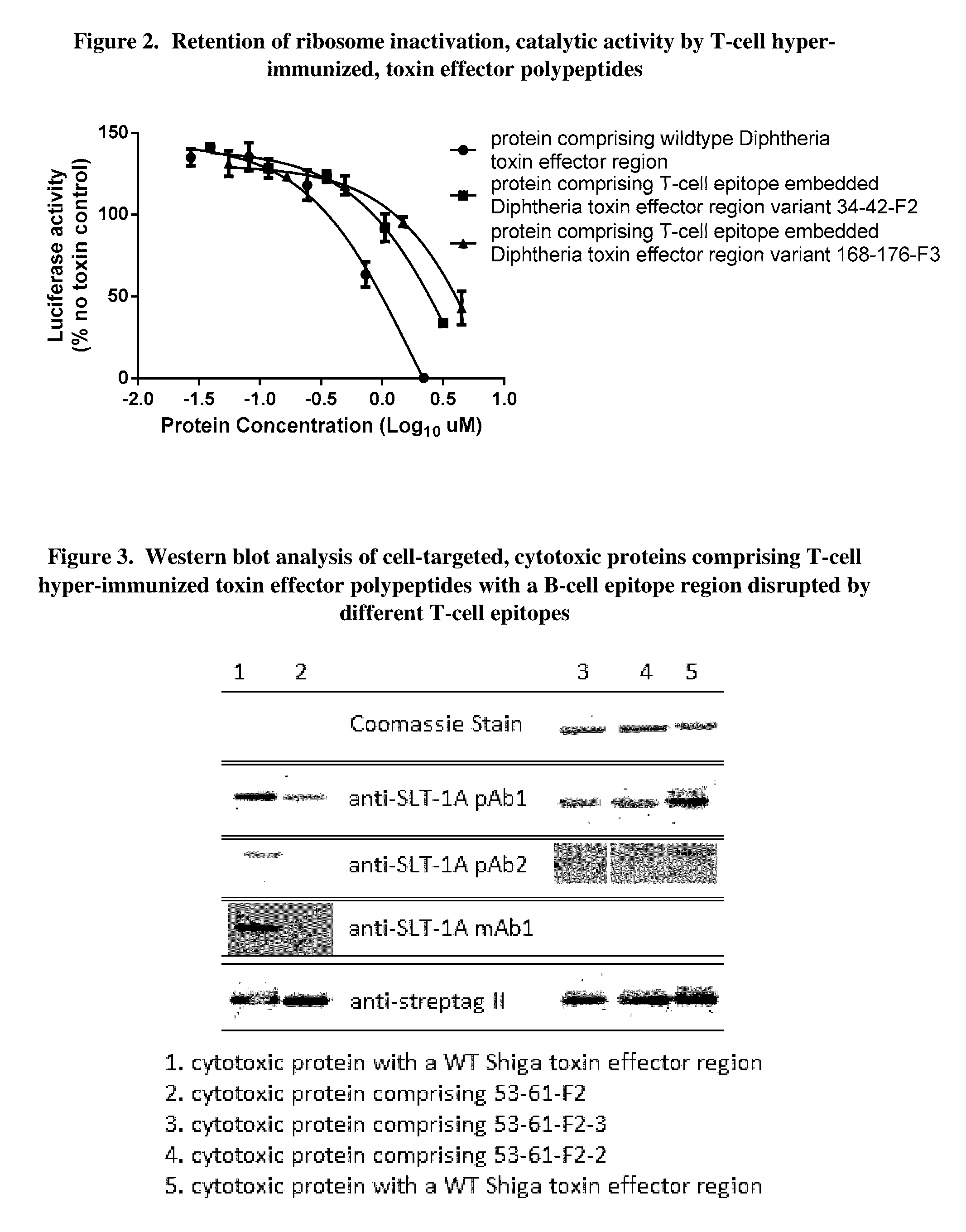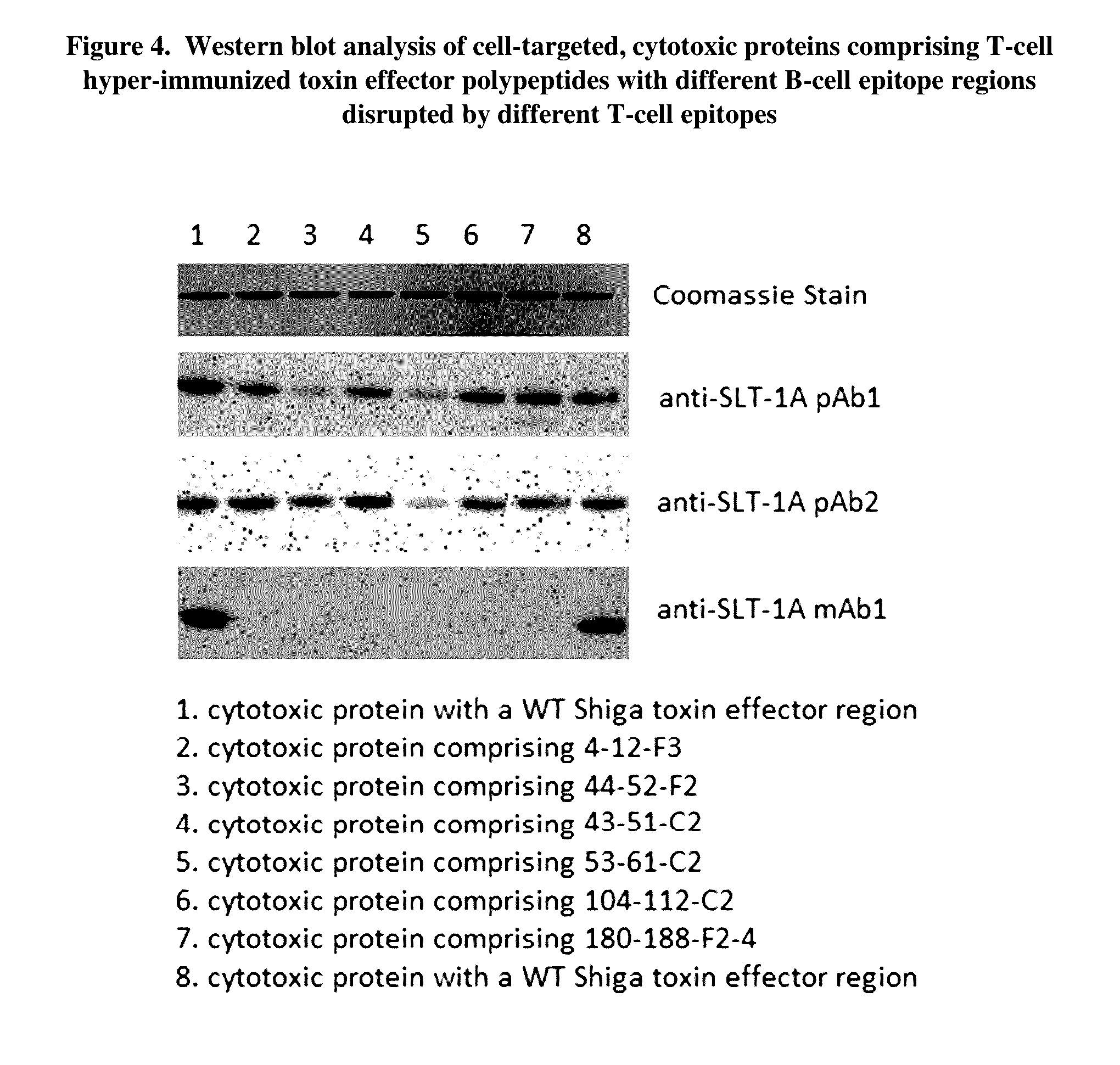Mhc class i epitope delivering polypeptides and cell-targeted molecules for direct cell killing and immune stimulation via mhc class i presentation and methods regarding the same
a technology of mhc class and epitope, which is applied in the direction of peptide/protein ingredients, fusion polypeptides, dna/rna fragmentation, etc., can solve the problems of unfavorable immune response, unpredictable pharmacokinetics, and reduce the effect of antigenic and/or immunogenic potential
- Summary
- Abstract
- Description
- Claims
- Application Information
AI Technical Summary
Benefits of technology
Problems solved by technology
Method used
Image
Examples
example 1
Embedding or Inserting T-Cell Epitopes within Polypeptide Components of Cell-Targeting Molecules
[0443]In this example, T-cell epitope sequences were selected from human viral proteins and embedded or inserted into Shiga toxin effector polypeptides. In some variants, the T-cell epitope was embedded or inserted into B-cell epitope regions in order to disrupt natively occurring B-cell epitopes. In other variants, the T-cell epitope is embedded into regions not predicted to contain any B-cell epitopes and, thus, these modifications are not predicted to disrupt any dominant B-cell epitopes. In some of the above variants, the T-cell epitope is embedded into regions predicted to disrupt catalytic activity.
A. Selecting T-Cell Epitope Peptides for Embedding or Insertion
[0444]In this example, known T-cell epitope peptides were selected for embedding and inserting into Shiga toxin effector regions which have the intrinsic ability to intracellularly route to the cytosol. For example, there are ...
example 2
Testing Toxin-Derived Effector Polypeptides for Retention of Ribotoxic Toxin Effector Function
[0473]Exemplary toxin-derived effector polypeptides of the invention were tested for retention of ribotoxic toxin effector function.
Shiga Toxin Derived Effector Polypeptides' Retention of Ribotoxicity
[0474]The retention of the enzymatic activity of the parental Shiga toxin effector polypeptide after embedding or inserting one or more T-cell epitopes was determined using a ribosome inhibition assay. The results of this assay in this example were based on performing the assay with each Shiga toxin effector polypeptide as a component of a cytotoxic protein. The specific cytotoxicities of different cytotoxic proteins comprising different Shiga toxin effector polypeptides were measured using a tissue culture cell-based toxicity assay. The enzymatic and cytotoxic activities of the exemplary cytotoxic, cell-targeted proteins of the invention were compared to the parental Shiga toxin effector polyp...
example 3
Testing the De-Immunization Effects of Disruption of B-Cell Epitope Regions and CD4+ T-Cell Epitope Regions in T-Cell Epitope Embedded, Toxin Effector Polypeptides
[0484]The disruption of B-cell epitope regions in Shiga toxin effector polypeptides using embedded or inserted T-cell epitopes was tested for de-immunization by investigating levels of antigenicity and / or immunogenicity compared to wild-type (WT) Shiga toxin effector polypeptides comprising only wild-type amino acid sequences.
Testing De-Immunization Via Western Analysis
[0485]To analyze de-immunization, the antigenicity or immunogenicity levels of Shiga toxin effector polypeptides was tested both in silico and by Western blotting using pre-formed antibodies which recognize wild-type Shiga toxin effector polypeptides.
[0486]Each Shiga toxin effector polypeptide described in Table 6 (SEQ ID NOs: 11-21) was checked for the disruption of predicted B-cell epitopes using the BcePred webserver using the following parameters: flexib...
PUM
| Property | Measurement | Unit |
|---|---|---|
| dissociation constant | aaaaa | aaaaa |
| dissociation constant | aaaaa | aaaaa |
| Histo-Compatibility | aaaaa | aaaaa |
Abstract
Description
Claims
Application Information
 Login to View More
Login to View More - R&D
- Intellectual Property
- Life Sciences
- Materials
- Tech Scout
- Unparalleled Data Quality
- Higher Quality Content
- 60% Fewer Hallucinations
Browse by: Latest US Patents, China's latest patents, Technical Efficacy Thesaurus, Application Domain, Technology Topic, Popular Technical Reports.
© 2025 PatSnap. All rights reserved.Legal|Privacy policy|Modern Slavery Act Transparency Statement|Sitemap|About US| Contact US: help@patsnap.com



